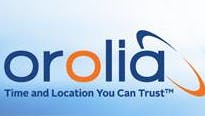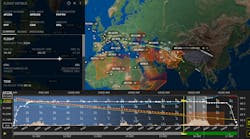Orolia’s Kannad Ultima-S, a first-generation Survival ELT (Emergency Locator Transmitter) to be installed in the aircraft’s cabin or life rafts, has been successfully tested with the Return Link Service (RLS) System in coordination with Galileo as the Service Provider and the French Cospas-Sarsat center. This successful test event makes Orolia’s Kannad Ultima-S the world’s first Survival ELT to include Galileo’s Return Link Automatic Acknowledgment Service.
Kannad Ultima-S has an optional feature for this distress Automatic Acknowledgment service. As part of the Cospas-Sarsat System, Galileo satellites can pick up emergency signals from the Search and Rescue distress beacons and transmit a ‘reassurance’ signal back to the beacon to confirm receipt of the distress signal.
This service provides the user with an automatic indication that the distress signal has been detected and localized, and the appropriate Rescue Coordination Center is alerted, all via the Cospas-Sarsat network.
The RLS capability has been introduced under the international Cospas-Sarsat upgrade program MEOSAR. In addition to the H2020 HELIOS Program, the European GNSS Agency (GSA) is funding the commercialization process for a new range of Galileo-enabled and RLS capable beacons for Civil Aviation under the TAUCETI project. It comprises the RLS-enabled distress beacons, the search and rescue payload on Galileo satellites, in addition to the ground-based receiving stations, Mission Control Centers and the Galileo Ground Mission Segment.
Orolia’s Kannad Ultima-S is the first Survival ELT capable of notifying the crew about the successful onsite localization and sending a notification to Search and Rescue operations via Galileo Return Link Service (RLS). This signal is designed to reduce risk taking actions by survivors, by confirming that search and rescue professionals are aware of their situation and location.
“This additional capability is a major improvement in the Search and Rescue process,” said Christian Belleux, aviation product line director at Orolia. “To receive a confirmation signal that your message has been received by the rescue services, meaning that a rescue team is on its way to save you, means a lot and makes the difference in the world for an end user in distress. Orolia’s technologies are continuously improved to provide the most accurate location and timing to Search and Rescue centers when help is needed. In a distress situation, every minute counts.”



